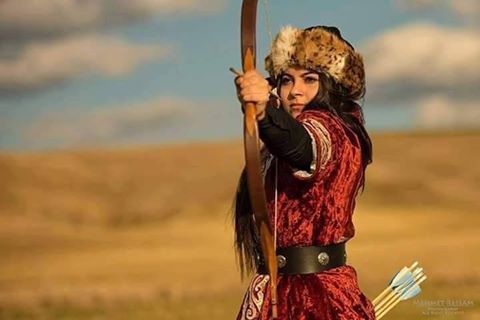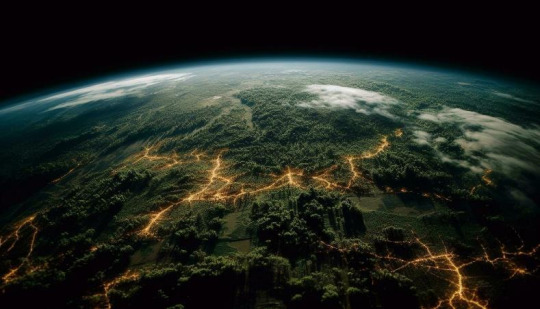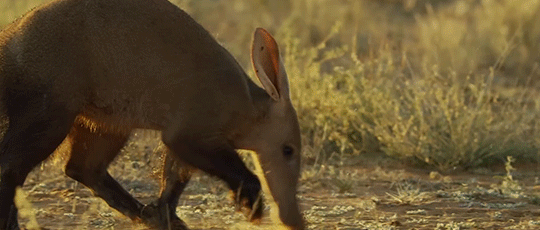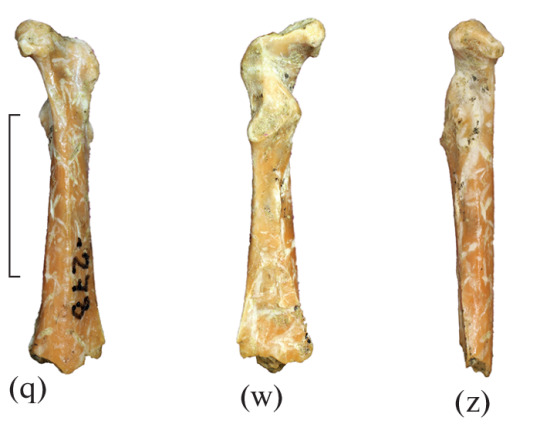#Eurasia Group
Explore tagged Tumblr posts
Text
Navalny's Widow Addresses EU Lawmakers
Yulia Navalnaya has vowed to continue her husband’s work to fight for a “free Russia,” Credit: EPA In the days following her husband Alexei Navalny’s death in a Russian prison colony on 16 February, Yulia Navalnaya has picked up his mantle as a prominent critic of President Vladimir Putin. Speaking to European lawmakers and students from across the continent in Strasbourg, Ms. Navalnaya called…

View On WordPress
#9M729 milliles (NATO classification: SSC-8)#Alexei Navalny#antisemitism#Arab Americans#Berlin#British Board of Film Classification#British Film Censors#CBO#CDU#CPAC#Disney#Donald Trump#Emmanual Macron#Eurasia Group#Evan Heerema#Friedrich Merz#Gallup poll#Gaza#Hamtramck#Hillary Clinton#immigration#Israel#James Cleverly#Jeremy Hunt#Jew hatred#Joe Biden#Kiev#Kyiv#Liberation Day#London
4 notes
·
View notes
Text
2025 será o ano mais perigoso geopoliticamente desde a Guerra Fria
Tóquio, Japão, 7 de janeiro de 2025, Agência Kyodo News. Um relatório da consultoria norte-americana Eurasia Group aponta que 2025 será o ano mais perigoso geopoliticamente desde o início da Guerra Fria, devido à crescente instabilidade global e à ausência de liderança internacional eficaz. O relatório anual, intitulado “Top Risks 2025”, foi divulgado nesta segunda-feira (6) e coescrito por Ian…
0 notes
Text
Global Times: ABD yüzünden dünya 'yılların Voldemort'una' giriyor
ABD merkezli küresel siyasi risk araştırma ve danışmanlık şirketi Eurasia Group tarafından yayınlanan son raporda, “Siyasi açıdan 2024, yılların Voldemort’u” ifadesi yer alıyor. Eurasia Group, Pazartesi günü yayınladığı “2024 için En Önemli Riskler” başlıklı yıllık raporunda bu görüşün gerekçesini ortaya koydu: 2024’te dünya meselelerine üç savaş hakim olacak: Rusya Ukrayna’ya karşı, İsrail…

View On WordPress
0 notes
Photo
These women are so beautiful. I love studying the Turkic history and culture, they're one of my favorites to study out of all the ethnic groups and histories that I looked up.








Turkic people
The Turkic peoples are a collection of ethno-linguistic groups of Central, Eastern, Northern and Western Asia as well as parts of Europe and North Africa. The Turkic peoples speak related languages belonging to the Turkic language family. They share, to varying degrees, certain cultural traits, common ancestry and historical backgrounds.
In time, different Turkic groups came in contact with other ethnicities, absorbing them, leaving some Turkic groups more diverse than the others. Many vastly differing ethnic groups have throughout history become part of the Turkic peoples through language shift, acculturation, intermixing, adoption and religious conversion. Despite this, many do share, to varying degrees, non-linguistic characteristics like cultural traits, ancestry from a common gene pool, and historical experiences.
The most notable modern Turkic-speaking ethnic groups include Turkish people, Azerbaijanis, Uzbeks, Kazakhs, Turkmens, Kyrgyz and Uyghur people.
6. Kazakhstan 8. Tuva
#turkic#turkic culture#turkic people#turkic women#central asia#west asia#eurasia#middle asia#asia#women#beautiful women#multicultural#culture#ethnicity#ethnic groups#world#humanity
8K notes
·
View notes
Text

Στους 10 μεγαλύτερους κινδύνους του 2024 οι Ηνωμένες Πολιτείες αντιπροσωπεύουν τον μεγαλύτερο μακροοικονομικό κίνδυνο, μπροστά από τη Μέση Ανατολή και την Ουκρανία. Οι κρίσεις συσσωρεύονται και εντείνονται σε όλο τον κόσμο. Σε αυτό το δυστοπικό πλαίσιο, το 2024 υπόσχεται να είναι «ένα έτος χωρίς όνομα», ένα έτος «Voldemort» (από τον ομώνυμο ήρωα της σειράς Harry Potter) ή ένα «a... Περισσότερα εδώ: https://romios.gr/zoferes-provlepseis-apo-eurasia-group-to-2024-tha-einai-ena-etos-dichos-onoma-ena-annus-horribilis-mia-chronia-voldemort/
#ΑΡΘΡΑΑΠΟΨΕΙΣ#Κόσμος#Ορθοδοξία#ΠοικιλαΘεματα#annus#Eurasia#Group#horribilis#Voldemort#από#δίχως#είναι#ένα#έτος#Ζοφερές#θα#Μια#όνομα#προβλέψεις#χρόνια
0 notes
Text
Today I've bravely gone were no white person has ever gone before
I was making a list for something and I wanted to get at least one example for each continent and maybe one from every sub-continent if I had the time. I finished it and re-reading I noticed it was missing something, I re-read it again to try to figure out and it still no clue, so I counted: 1 for south America, 1 for north America, 1 for central America, 2 for Africa, 2 for Asia, 1 for Oceania. Yup, that's all of them, what was a thing about? Antarctica? Unless the penguin develop a culture it would be really hard to... only then I realized
I had forgotten about Europe
#I live in Europe#And it's not even that this is the place I was born in so I think that it's the default I wasn't even born in Europe#I almost turned this in to my European professor in a group project with my European class mates#would have been a power move not gonna lie#also yes I know it's Eurasia#I got so used to thinking about it as Eurasia that I forgot that most people insist on being wrong
0 notes
Text





It's a giant deer that inhabits the world of "乾坤の鷲-Kenkon no washi-" This character is particularly my favorite.
"乾坤の鷲-Kenkon no washi-" is a fictional world primarily modeled after Central Eurasia, and within it, this creature is revered as a sacred beast by the minority groups living in the cold northern regions (similar to the border between Russia and Mongolia in the real world).
Despite its gentle nature, it often goes unnoticed by jinka, who perceive humans similarly to small animals. It mainly feeds on moss, bark, and the like, but it eats a variety of things such as mushrooms, fish, and carrion.
#乾坤の鷲#original character#original#character design#digital illustration#creature#人外#artwork#digital art#monster#illustration#funny#deer
8K notes
·
View notes
Text
There is a growing body of physiological, anatomical, ethnographic, and archaeological evidence to suggest that not only did women hunt in our evolutionary past, but they may well have been better suited for such an endurance-dependent activity. We are both biological anthropologists. I (co-author Cara) specialize in the physiology of humans who live in extreme conditions, using my research to reconstruct how our ancestors may have adapted to different climates. And I (co-author Sarah) study Neanderthal and early modern human health. I also excavate at their archaeological sites. It’s not uncommon for scientists like us—who attempt to include the contributions of all individuals, regardless of sex and gender, in reconstructions of our evolutionary past—to be accused of rewriting the past to fulfill a politically correct, woke agenda. The actual evidence speaks for itself, though: Gendered labor roles did not exist in the Paleolithic era, which lasted from 3.3 million years ago until 12,000 years ago. The story is written in human bodies, now and in the past.
[...]
Our Neanderthal cousins, a group of humans who lived across Western and Central Eurasia approximately 250,000 to 40,000 years ago, formed small, highly nomadic bands. Fossil evidence shows females and males experienced the same bony traumas across their bodies—a signature of a hard life hunting deer, aurochs, and woolly mammoths. Tooth wear that results from using the front teeth as a third hand, likely in tasks like tanning hides, is equally evident across females and males. This nongendered picture should not be surprising when you imagine small-group living. Everyone needs to contribute to the tasks necessary for group survival—chiefly, producing food and shelter, and raising children. Individual mothers are not solely responsible for their children; in forager communities, the whole group contributes to child care. You might imagine this unified labor strategy then changed in early modern humans, but archaeological and anatomical evidence shows it did not. Upper Paleolithic modern humans leaving Africa and entering Europe and Asia show very few sexed differences in trauma and repetitive motion wear. One difference is more evidence of “thrower’s elbow” in males than females, though some females shared these pathologies. And this was also the time when people were innovating with hunting technologies like atlatls (spear throwers), fishing hooks and nets, and bow and arrows—alleviating some of the wear and tear hunting would take on their bodies. A recent archaeological experiment found that using atlatls decreased sex differences in the speed of spears thrown by contemporary men and women. Even in death, there are no sexed differences in how Neanderthals or modern humans buried their dead or the goods affiliated with their graves. These indicators of differential gendered social status do not arrive until agriculture, with its stratified economic system and monopolizable resources. All this evidence suggests Paleolithic women and men did not occupy differing roles or social realms.
1K notes
·
View notes
Text
GERMAN POLITICS TURNS VIOLENT
Franziska Giffey, a prominent Berlin politician, was violently assaulted and suffered injuries to her head and neck. (https://apnews.com/article/germany-election-violence-eu-4d09d90a6cc380aacf62ca4a69af1a64) Latest attack on a German politician stokes concern ahead of elections German politics is getting violent. This week, Berlin’s top economic official was attacked, sustaining head and neck…

View On WordPress
#assassination#autism#Berlin#biomedical intervention#Capitol Hill#CDU#coalition of the willing#David Heilbron Price#Deferred Action for Childhood Arrivals (DACA) program#Donald Trump#Dream Deferred#Dreamers#Estonia#Eurasia Group#European Parliament elections#FDP#Franziska Giffey#Gazan refugees#Georgia#Germany#Green Party#Henry Jom#House of Representatives#Israel#Jan Techau#Joshua Cobb#Kharkiv#Kiev#Lindsey Graham#Lithuania
0 notes
Photo

Amazon Women
In Greek mythology, the Amazons were a race of warlike women noted for their riding skills, courage, and pride, who lived at the outer limits of the known world, sometimes specifically mentioned as the city of Themiskyra on the Black Sea. Their queen was Hippolyte, and although Homer tells us they were 'the equal of men', they most famously fought and lost separate battles against three Greek heroes: Hercules, Theseus, and Bellerophon. Scenes from these battles were popular in Greek art, especially on pottery and in monumental sculpture adorning some of the most important buildings in the Greek world, including the Parthenon of Athens. Intriguingly, archaeological investigation of tombs across Eurasia has shown conclusively that many women of nomadic steppe tribes were indeed warriors, particularly around the Black Sea area.
Origins & Name
In mythology, the Amazons were daughters of Ares, the god of war. They were members of a women-only society where men were welcomed only for breeding purposes and all male infants were killed. They were thought to dwell at the edge of what the Greeks considered their 'civilized' world and were most often associated with the area around the southern coast of the Black Sea, particularly the city-state of Themiskyra. Another Anatolian connection was at Ephesus, where it was thought Amazons had sacrificed to the goddess of hunting Artemis at her temple there and performed war dances, a ceremony repeated annually thereafter. Indeed, the foundation of many settlements in Asia Minor was credited to Amazons, notably Ephesus, Cyme, Sinope, Priene, Myrina, Smyrna, and Mytilene on Lesbos.
Herodotus (c. 484 – 425/413 BCE), writing in his Histories (Bk. 4, 110-117), gives a lengthy description of a meeting between Amazons and Scythians. Young warriors of the latter group persuaded a number of visiting Amazons to set up a new society together, with the women insisting neither they nor their offspring would change their lifestyles at all. This new race was considered the origins of the Sarmatians in southern Russia, appropriately enough, a people famous for their horses and military aggression.
Essentially, the society of the Amazons was thought of as Greek male-society in reverse and so they pursued such traditional male-dominated activities as horse-riding, hunting, and warfare. In legend (with no supporting historical evidence), the Amazons burnt off their right breast in order to better use a bow and throw a spear, indeed, the term a-mazon was popularly understood as meaning 'breastless', although alternative meanings include 'one breast' or 'not breast-fed.' Another alternative origin of the name is that it comes from Persian and means simply 'warrior.' One final interpretation is that the name derives from the Armenian, meaning 'Moon-goddess', and refers to priestesses of the Moon on the southern shores of the Black Sea who did, on occasion, bear arms. Interestingly, Amazons are not depicted in ancient Greek art with a missing breast. The historian Adrienne Mayor suggests that the literary confusion, therefore, comes from the similarity between mazon and the Greek word for breast mastos. In art, Amazons are most often depicted wearing hoplite armour and they frequently ride a horse. The most common weapons are the bow and spear, but there are also examples where Amazons carry axes. They were not only regarded as capable warriors but also particular experts at ambush and cavalry charges.
Continue reading...
92 notes
·
View notes
Text

Paleo-Profiles: Peloroplites cedromontanus and Utahraptor ostrommaysi
Impressions of two different dinosaurs, one orntihischian and one saurischian, that lived in two separate members of eastern Utah’s Cedar Mountain Formation, which spans much of the Early Cretaceous in a period lasting from 140 to 94 million years ago; Peloroplities cedrimontanus from the uppermost 104-93 mya Mussenthuchit Memeber, and Utahraptor ostrommaysi from the much lower 139-134.6 mya Yellow Cat Member.
Peloroplities was one of the largest, bulkiest and heaviest nodosaurs of the Cenomanian-Turonian stages, a time when Eurasia and especially North America were witnessing a peak in Nodosaurid diversity. It grew up 6 meters long and 2 tonnes in weight, and was a contemporary of the smaller nodosaurs Animantarx and Cedarpelta and saurischians such as Abydosaurus, Moros and Siats.
A 5-7 meters long, 2 meters tall an kilograms in weight, Utahraptor was the largest and heaviest memeber of the dromaeosauridae, the iconic sickle-claws maniraptorans that would later include dinosaurs such as Deinonychus, Dromaeosaurus, Sauronitholestes and Velociraptor. Its heavily-robust build, large sickle claw, powerful leg muscles, and deep jaws were well-suited for ambushing and dispatching large prey animals such as the sauropod Cedarosaurus and the giant ornithopod Iguanacolossus, and as a solitary hunter it may have formed loose, mob-like groups of other Utahraptors to to tackle difficult-to-hunt prey in a similar fashion to modern crocodiles and Komodo dragons. This is demonstrated by the discovery of a 9-ton fossil block of limestone in 2001 that preserves a mob of several Utahraptors of varying ages that all died while trying to take on a single iguanodont that got stuck in a large pool of quicksand.
#paleoart#dinosaur#dinosaurs#paleontology#peloroplities#utahraptor#dromaeosaurs#dromaeosaurid#dromaeosaur#paleontologie#palaeontology#palaeoart#paleoartist#paleoartists on tumblr#paleoblr#nodosaur#ornithischian#ornithischians#saurischian#saurischians#theropods#theropoda#theropod#early cretaceous#mesozoic#palaeoblr
127 notes
·
View notes
Text



The rough-stemmed bolete, scaber stalk, or birch bolete (lat. Léccinum scábrum). An edible type of mushroom with a brown cap and a beige stem with longitudinal dark scales.
This fungus grows in groups and singly in light mixed and deciduous forests of Eurasia, North and South America, in tundra and forest tundra next to dwarf birches. It appears in early summer and until the end of autumn, sometimes before frosts.🍃
Подберёзовик обыкновенный (лат. Léccinum scábrum). Съедобный вид гриба с коричневой шляпкой и бежеватой ножкой с продольными тёмными чешуйками.
Данный гриб растёт группами и по одиночке в светлых смешанных и лиственных лесах Евразии, Северной и Южной Америки, в тундре и лесотундре рядом с карликовыми берёзами. Появляется он в начале лета и до конца осени, порой до заморозков.🍃
#noseysilverfox#photography#mashrooms in the forest#mashroom#fungi photography#nature#naturecore#summer#atmospheric#random facts#interesting places#wood#forest photography#nature aesthetic#aesthetic#photography on tumblr#fotografía original#original photography on tumblr#природа#фотографии природы#фотоблог#грибы#лес#лесной пейзаж#интересные факты#турумбочка#дикая природа#wildlife photography#love nature#красота природы
100 notes
·
View notes
Text
Round 3 - Mammalia - Tubulidentata

(Source)
There are many fossil species within the order Tubulidentata, but today one family, Orycteropodidae, one genus, Orycteropus, and one species, Orycteropus afer, remain. Orycteropus afer is commonly known as the “Aardvark.”
The aardvark is a medium-sized, burrowing, nocturnal afrotherian mammal. They have a long proboscis, vaguely similar to a pig's snout, which is used to sniff out food. Each toe bears a large, robust nail which is somewhat flattened and shovel-like, and appears to be intermediate between a claw and a hoof. They use their sharp claws and powerful legs to excavate burrows and to dig ants and termites out of their mounds. The aardvark then uses its long (up to 30 cm (12 in)) tongue to lick up the insects. The aardvark is pale yellowish-grey in colour and often stained reddish-brown by soil. They have tough skin and a coat of thin hairs. The hair surrounding their nostrils is dense to help filter out dirt as they dig. Aardvarks can run fast in a zigzag fashion to evade predators, making for the nearest burrow. If a burrow is too far away, it can quickly dig a new one. If all else fails, they will strike with their claws, tail and shoulders, sometimes flipping onto their backs lying motionless except to lash out with all four feet. They are capable of causing substantial damage to unprotected areas of an attacker. If attacked in a tunnel, it will escape by digging out of the tunnel thereby placing the fresh fill between it and its predator, or if it decides to fight it will roll onto its back, and attack with its claws. Aardvarks are typically around 105 and 130 centimetres (3.44–4.27 ft) long, and can reach lengths of 2.2 metres (7 ft 3 in) when its tail is taken into account. It is 60 cm (2 ft) tall at the shoulder, and has a girth of about 100 cm (3.3 ft). It typically weighs between 60 and 80 kilograms (130–180 lb). Aardvarks are found over much of the southern two-thirds of Africa, avoiding areas that are too rocky.
Aardvarks can live solitarily or in small family groups. They have polygamous breeding behavior. Males do not play a role in raising young, only staying with the female during the breeding season. After a gestation period of seven months, one cub weighing around 1.7–1.9 kilograms (3.7–4.2 lb) is born during May–July. The cub is able to leave the burrow to accompany its mother after only two weeks and eats termites at nine weeks, but is fully weaned between three months and 16 weeks. At six months of age, it is able to dig its own burrows, but it will often remain with the mother until the next mating season, and is sexually mature from approximately two years of age.
Orycteropodidae arose in Africa in the Early Miocene epoch, and spread to Eurasia later in the Miocene. Most of the family's diversity had become extinct by the end of the Pliocene. The genus Orycteropus is known from the Late Miocene, with Orycteropus afer itself arising in the Early Pliocene, and surviving into the modern day as the last representative of its lineage.

Propaganda under the cut:
While the aadvark eats mainly ants, especially the Common Pugnacious Ant (Anoplolepis custodiens), switching to termites in the Winter when ants are less common, there is one fruit the aardvark eats. This is the Aardvark Cucumber (Cucumis humifructus), which is reliant on the aadvark to eat the fruit in order to spread and re-bury the seeds of the plant. The time spent in the intestine of the aardvark helps the fertility of the seed, and aardvarks then bury their feces, so the seeds are only able to germinate with their assistance. In the meantime, aardvarks get much of their water intake from the cucumber. This plant may be the reason the aardvark is the only ant and termite-eating mammal that has retained functional cheek teeth.
Emerging from its burrow at sunset to begin a night of foraging, the aardvark will trek over a considerable home range encompassing 10 to 30 kilometres (6.2 to 18.6 mi), nose to the ground and ears forward, listening and smelling for ants and termites. They zig-zag as they forage and will usually not repeat a route for five to eight days as they appear to allow time for the insect nests to recover before feeding from them again.
The aardvark is known to be a good swimmer and has been witnessed successfully swimming in strong currents.
Aardvarks have one main burrow and several refuge burrows scattered throughout their territory. For safety, the aardvark will change the layout of its home burrow regularly, and periodically move out and make a new one. Old aardvark burrows are prime real estate for African wildlife, and are used by African Wild Dogs (Lycaon pictus), Ant-eating Chats (Myrmecocichla formicivora), Egyptian Slit-faced Bats (Nycteris thebaica), warthogs, hares, mongooses, hyenas, owls, pythons, and lizards. Without these refuges many animals would die during wildfire season.
Recent research suggests that aardvarks may be particularly vulnerable to alterations in temperature caused by climate change. Droughts negatively impact the availability of termites and ants, which comprise the bulk of the aardvark's diet. Nocturnal species faced with resource scarcity may increase their diurnal activity to spare the energy costs of staying warm at night, but this comes at the cost of withstanding high temperatures during the day. A study on aardvarks in the Kalahari Desert saw that five out of six aardvarks being studied perished following a drought. Aardvarks that survive droughts can take long periods of time to regain health and optimal thermoregulation, reducing the reproductive potential of the species.
The ancient Egyptian god Set, the god of the desert, storms, chaos, violence, and foreigners, is often depicted with the head of an unknown animal, called the “Set animal” by Egyptologists. The animal has a downward curving snout, long upward ears with squared-off ends, a thin, forked tail with sprouted fur tufts in an inverted arrow shape, and a slender canine body. One of the proposed animals that this could depict is the aardvark.
40 notes
·
View notes
Text
Tologuica vetusta Zelenkov, 2024 (new species)

(Type coracoid [shoulder bone] of Tologuica vetusta [scale bar = 10 mm], from Zelenkov, 2024)
Meaning of name: vetusta = ancient [in Latin]
Age: Miocene (Burdigalian), about 16.3–16.5 million years ago
Where found: Tagay Formation, Irkutsk Oblast, Russia
How much is known: A partial left coracoid (shoulder bone).
Notes: T. vetusta was a phasianid, a group that includes chickens, partridges, and turkeys. In particular, it appears to have been closely related to Afro-Eurasian quails, such as those in the genus Coturnix. Two slightly younger species of Tologuica had previously been named from the Miocene of Mongolia, T. aurorae and T. karhui. T. vetusta was generally more similar to T. karhui anatomically, but was closer in size to the smaller T. aurorae.
Reference: Zelenkov, N.V. 2024. The diversity and evolution of quails and allies (Aves: Galliformes: Phasianidae: Coturnicini) in the Miocene–Early Pleistocene of Eurasia. Paleontological Journal 58: 1089–1193.
33 notes
·
View notes
Text
The Scythian Transgender Priestesses
The YouTube video titled "Exploring the remains of an ancient trans priestess" delves into the archaeological discovery of a burial site believed to belong to a Scythian transgender priestess from approximately 2,000 years ago.
The video examines the grave goods found at the site, providing insights into the individual's societal role and the cultural context of gender diversity in ancient times.
Sophie, who has made many videos on the the history of transgender lives and culture, offers a well-researched narrative, shedding light on historical instances of transgender identities and their recognition in past societies.
youtube
Sophie has actually made several videos on Scythian enarei (also referred to as enaree or anaray) priestesses.
Here is a general overview:
youtube
The Scythians were a group of ancient nomadic peoples who inhabited the steppes of Eurasia, particularly the region stretching from modern-day Ukraine and southern Russia to parts of Central Asia, from around the 9th century BCE to the 4th century CE.
Known for their exceptional skills in horseback riding, archery, and warfare, the Scythians played a significant role in the history and cultural exchanges of the ancient world.

Scythian tiara depicting the goddess Artimpasa surrounded by priestesses, including an enarei on the right.
The enarei were associated with an orgiastic cult dedicated to the goddess Artimpasa and the Scythians' ancestral Snake-Legged Goddess.
These deities were heavily influenced by Near Eastern fertility goddesses. The enarei's rituals combined indigenous Scythian shamanistic practices, which were similar to those of Siberian peoples, with elements imported from Levantine religions.
35 notes
·
View notes